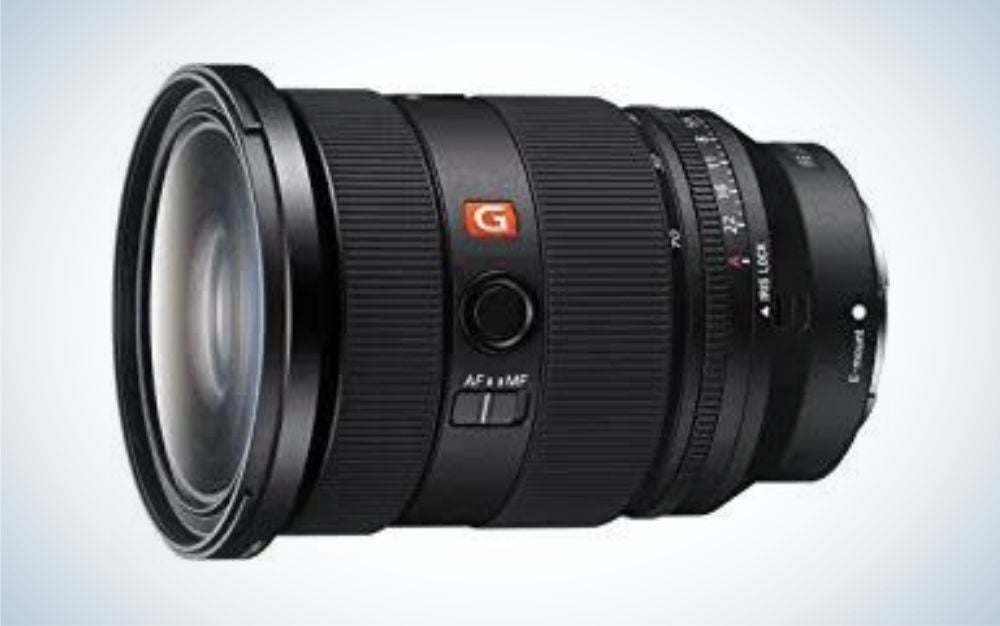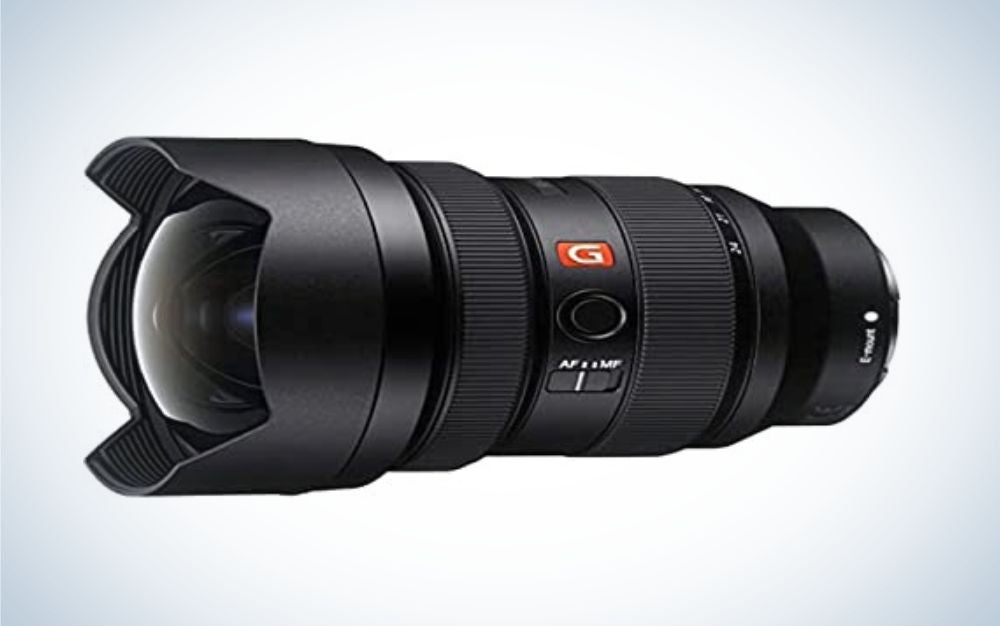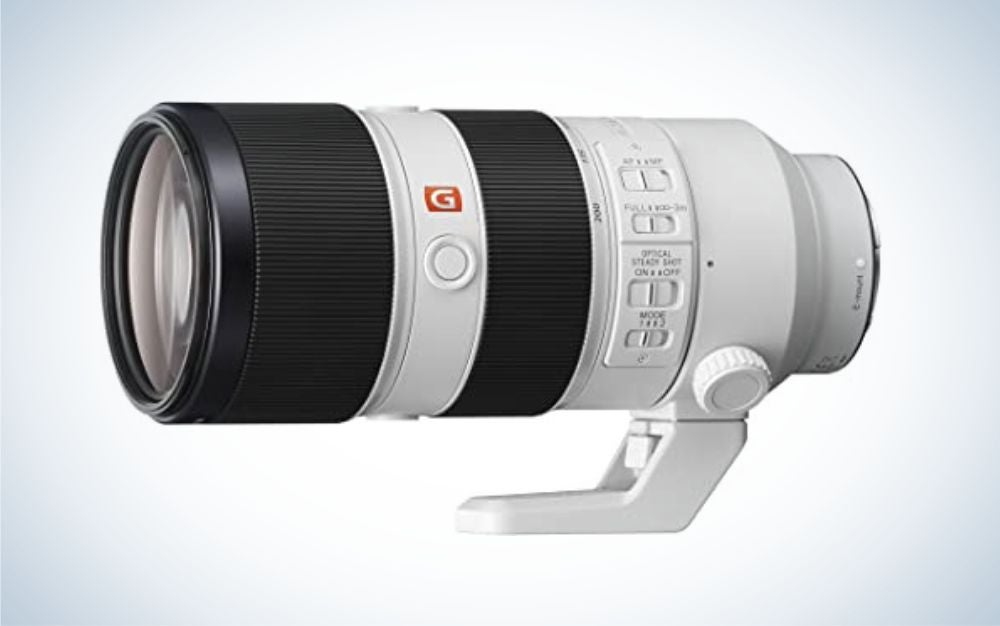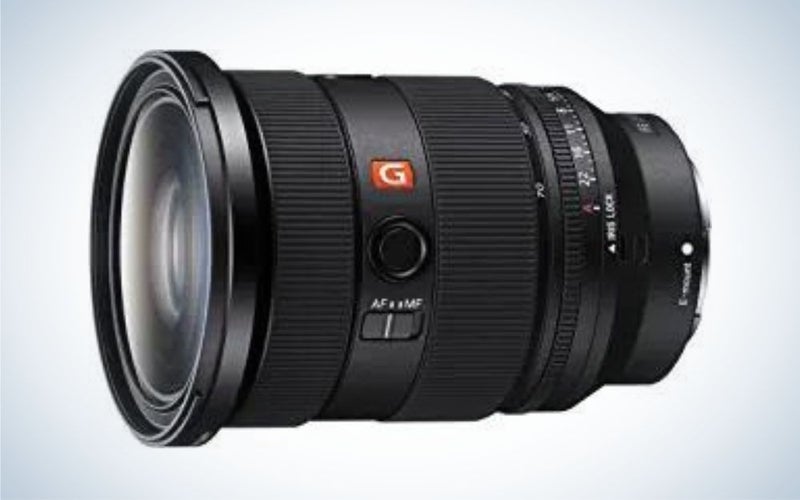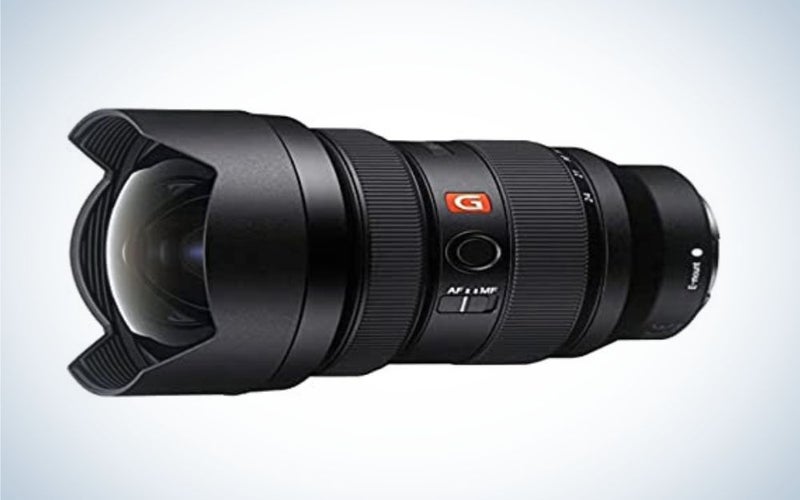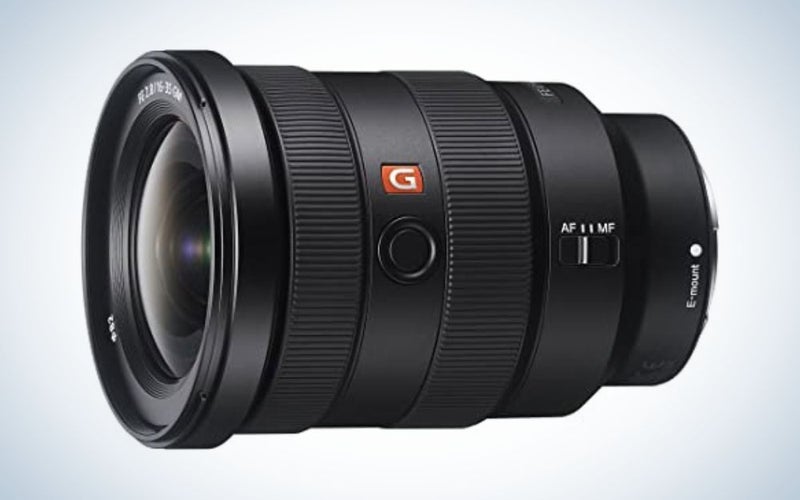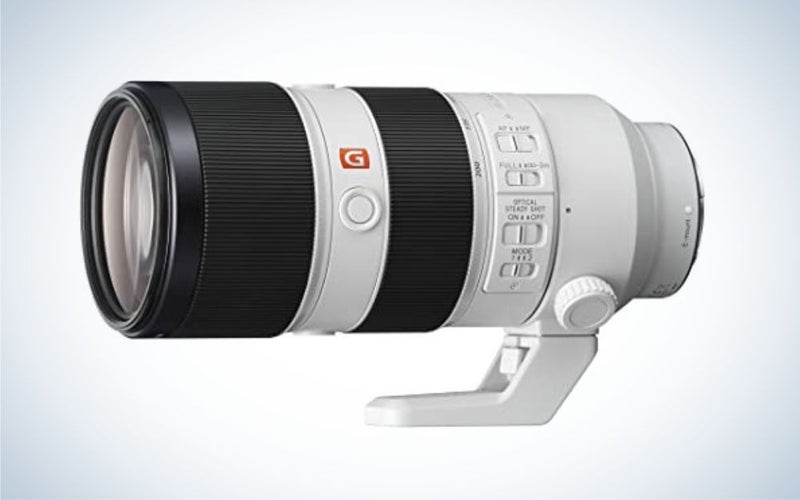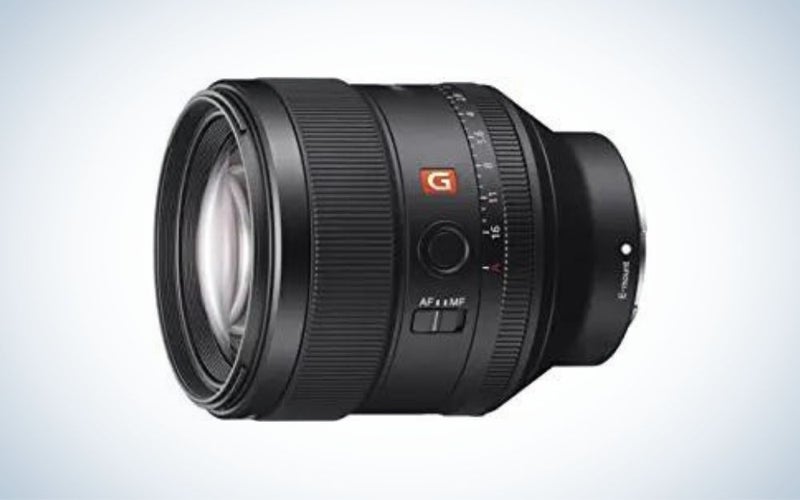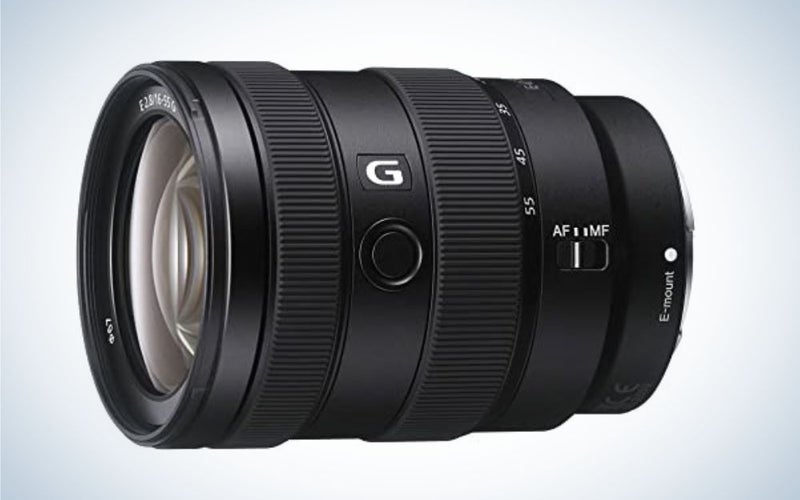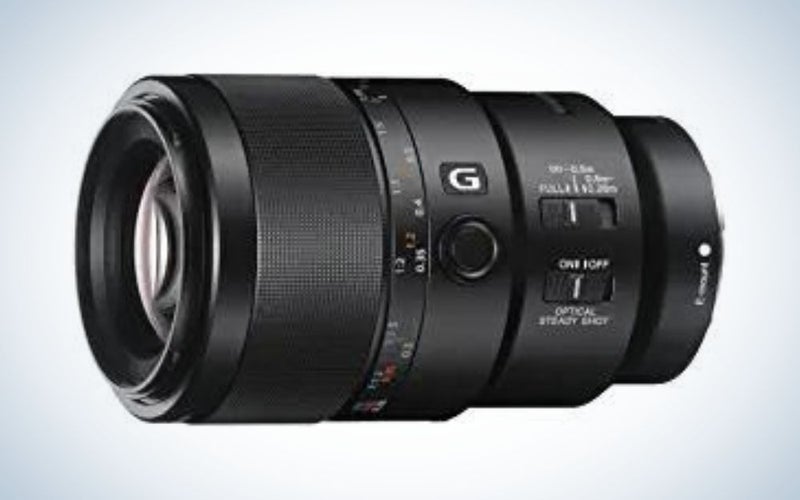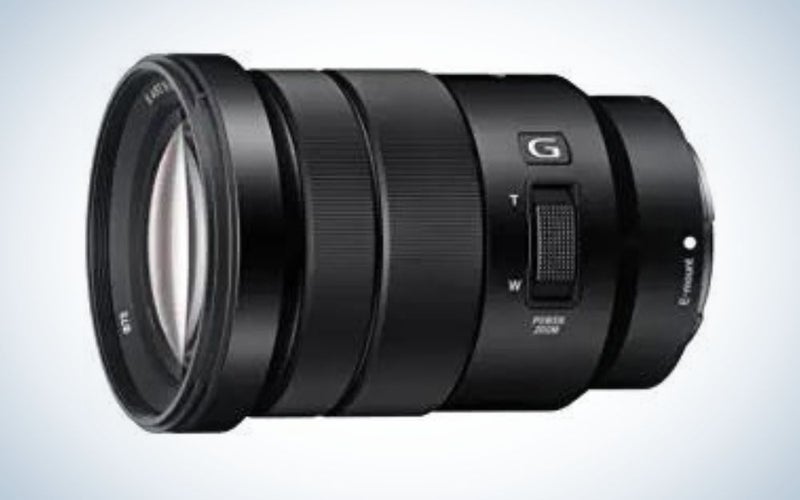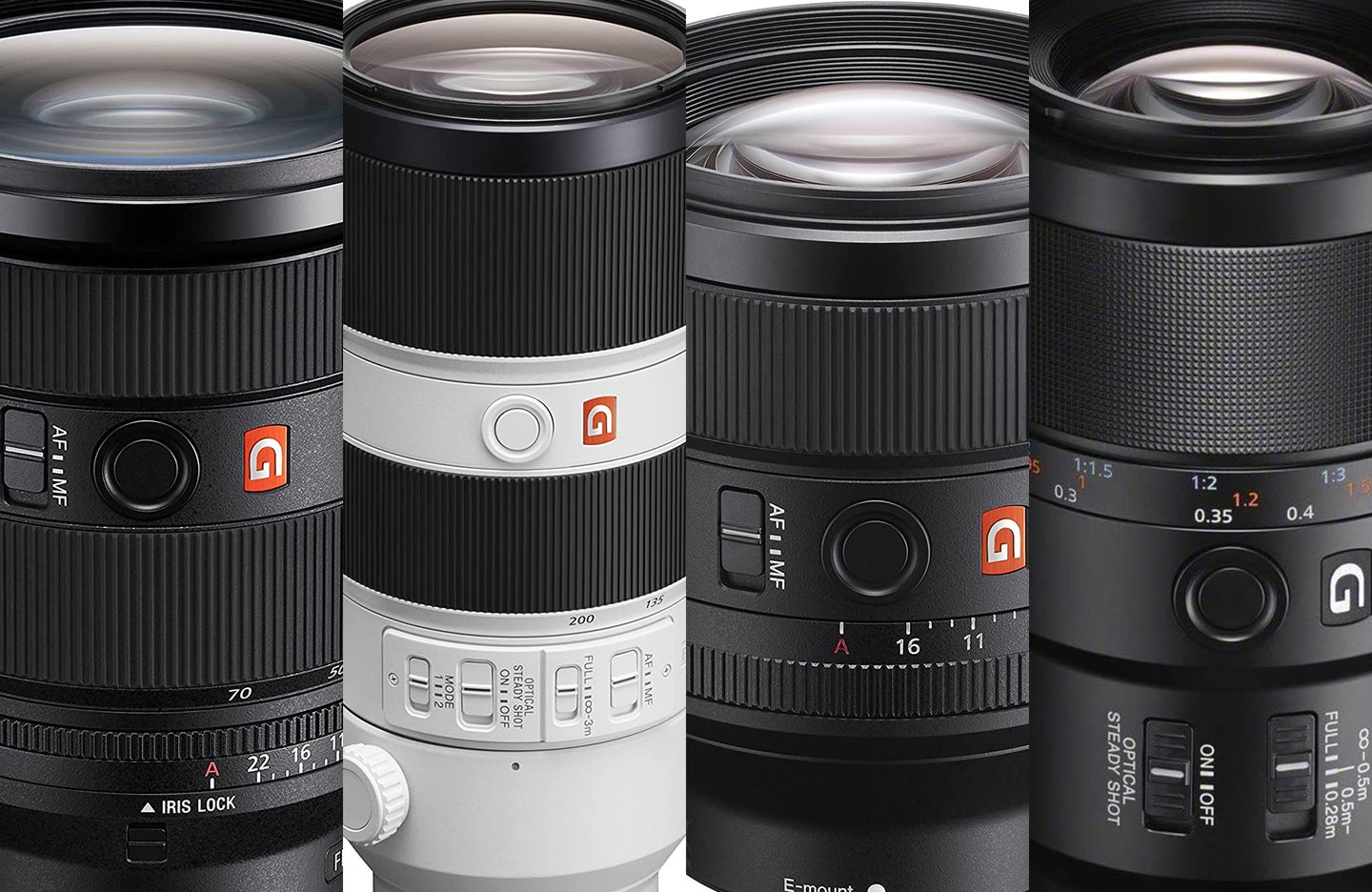
Sony makes some impressive, highly capable cameras, and if you own one, it’s only natural that you want quality Sony lenses to go with it. While lens options used to be somewhat limited, Sony has expanded its range in recent years. You’ll now find just about any focal length you want, with plenty of zoom and prime choices.
Sony also has multiple lines of lenses to cover different budgets. It has the expensive though high-quality GM lineup as well as the more affordable G line. There are also lenses collaboratively built with Zeiss for more variety. Plus, third-party lens manufacturers are filling even more gaps. But no matter what you are looking for, the best Sony lenses will help you take advantage of the features and quality of your Sony camera.
- Best overall: Sony FE 24-70mm f/2.8 G Master II
- Best ultra-wide-angle: Sony FE 12-24mm f/2.8 GM
- Best wide-angle: Sony FE 16-35mm f/2.8 GM
- Best telephoto: Sony FE 70-200mm f/2.8 GM OSS Lens
- Best for portraits: Sony FE 85mm f/1.4 GM Lens
- Best APS-C: Sony E 16-55mm f/2.8 G
- Best macro: Sony FE 90mm f/2.8 Macro G OSS
- Best budget: Sony E PZ 18–105 mm F4 G OSS APS-C
Here are our picks for the best Sony lenses:
Best overall: Sony FE 24-70mm f/2.8 G Master II
Sony
Why it made the cut: The second version of this versatile focal length has a fast aperture, and at just 1.5 pounds, it’s lighter than any other 24-70mm on the market.
Key features:
- Weight: 1.5 pounds
- Dimensions: 3.5 x 4.7-6 inches
- Filter thread: 82mm
- Minimum focusing distance: 8.3 inches
Pros
- Lightweight and compact
- Very responsive and quiet autofocus
- Superb image quality
- Attractive bokeh
Cons
- Expensive
24-70mm is perhaps the most versatile zoom lens you can have. It goes from a solid wide-angle to a short telephoto, making it a great all-arounder. That versatility earns it the top spot here. Released in June of 2022, this is Sony’s second iteration of the classic 24-70mm focal length. The update came with some very worthwhile improvements, most notably the more compact size. It’s 20% lighter than the first version and 16mm shorter. It’s the lightest 24-70mm available across any company. Thanks to its compact size and focal length range, it’s a perfect travel lens.
Sony also improved the autofocus abilities of this lens, resulting in faster and quieter focusing than the original version. That’s partly thanks to the fact that it’s powered by four XD (extreme dynamic) Linear motors. It’ll pair perfectly with the very intelligent autofocus of Sony’s cameras. Unfortunately, Sony didn’t fully solve everything related to focusing. While the focus breathing (a phenomenon in which the field of view changes as you focus) has been reduced from the first version, some lingered. It’s minimal, but it is something to keep in mind if you will be using this for videos.
As is standard on G Master lens, it is fully weather sealed, so you won’t have to worry about bringing it into tough environments. It’s also made of tough polycarbonate, which helps cut down on the weight. And the included lens hood comes with the welcome addition of a sliding window, which allows you to check and adjust your circular polarizer much more easily. It’s a small thing but is definitely a nice touch.
Where this lens shines, of course, is its sharpness. It’s supremely sharp, even edge to edge when wide open and throughout the zoom range. It really is capable of producing some spectacular images. And, thanks to the 11-blade iris diaphragm, the bokeh is very smooth and attractive. Sony also improved the close focusing of the second iteration, and you can now focus as close as just 8.3 inches. It’s not a true macro lens, but you’ll be able to get some nice detail shots with it.
Best ultra-wide-angle: Sony FE 12-24mm f/2.8 GM
Sony
Why it made the cut: It has a faster aperture than anything else this wide, fast and accurate autofocus, and minimal, easily corrected distortion.
Key features:
- Weight: 1.86 pounds
- Dimensions: 3.84 x 5.39 inches
- Filter thread: 11.02 inches
- Minimum focusing distance: Rear drop-in filters only
Pros
- Excellent sharpness
- Fast autofocus
- Fastest aperture available for a lens this wide
- Distortion and vignetting are well-handled.
Cons
- Bulbous front element prevents the use of screw-on filters
- Heavy
Ultra-wide-angle lenses are a bit of a niche product, but they are essential pieces of equipment for the likes of real estate and landscape photographers. They also are a fun tool for making creative and unique images. They provide dramatic, sweeping views and allow you to show more in a single frame. Sony’s ultra-wide stands out from the competition because it is the widest f/2.8 zoom you can buy. No other zoom lens is this fast and this wide.
Distortion can make ultra-wide lenses challenging. If you are shooting interiors, the last thing you want is dramatic, complicated distortion. Luckily, distortion is very well handled thanks to Sony’s design that includes three extreme aspherical elements and one standard aspherical element. That’s not to say it’s fully absent, but it’s simple barrel distortion at the wide end and pincushion when zoomed in, making it straightforward to correct.
Another issue common to ultra-wide-angle lenses is ghosting and flare. Since they are so wide, they tend to show flares if the sun is pretty much anywhere other than directly behind you. Yet this lens handles those things remarkably well, making them much less of an issue. That’s partially a result of the built-in lens hood, which doubles as protection since the front element is bulbous and sticks out. And, for photographers who love their sunstars, this lens creates some beautiful ones.
As we would expect from G Master lenses, the resolution is exceptional. It produces some of the sharpest images from any ultra-wide available. There is a slight hint of softness on the edges, but it’s incredibly minimal, which is impressive for something this wide. Your images won’t be as sharp if you stop down to f/22, but at the rest of the aperture and zoom range, the image quality is stunning. Also typical of G Master lenses is a rather high price. If you want to save some money but lose out on a little bit of range, Sigma’s 14-24mm f/2.8 is also a superb option at a much lower price.
Best wide-angle: Sony FE 16-35mm f/2.8 GM
Sony
Why it made the cut: With a fast f/2.8 aperture, beautiful bokeh, and silent autofocus, this wide-angle zoom is ideal for a range of applications.
Key features:
- Weight: 1.5 pounds
- Dimensions: 3.5 x 4.8-5.4 inches
- Filter thread: 82 mm
- Minimum focusing distance: 11 inches
Pros
- Extremely sharp, even wide open
- Silent and fast autofocus
- Beautiful bokeh
- Includes a focus lock button
Cons
- Some softness on edges when zoomed in
- No focus markings on the lens
16-35mm is an ideal focal length range for covering a wide range (no pun intended) of situations. It’s wide enough to do interior and real estate work, but having the ability to zoom to 35mm makes it perfect for group photos and some portraiture. The fast f/2.8 aperture makes it great in low-light situations, and the 11-blade rounded aperture allows for beautifully smooth bokeh. It would be a great lens to have in your kit if you are a wedding or event photographer.
The autofocus of this lens is fast and also essentially silent. That’s a plus if you shoot video or will be photographing in quiet spaces like churches. Unfortunately, there are no focus or depth of field scale markings on the lens, which means you can’t focus at a specific distance as easily. But, there is a focus hold button on the lens body. It’s a customizable button as well, should you want to use it for something else.
The lens can focus as close as 11 inches. It’s no macro, but it does mean you can take some nice detail shots with good background separation, especially thanks to the f/2.8 aperture. And, because of the high resolution of this lens, those detail shots–and anything else, of course–will be remarkably clear and sharp. It’s even sharp when wide open, which isn’t typically the case.
It is a heavy lens for this focal length, and there are lighter and more compact options out there. If you don’t mind losing a stop of aperture, Sony’s own 16-35mm Vario-Tessar T FE F4 ZA OSS weighs–and costs–about half as much.
Best telephoto: Sony FE 70-200mm f/2.8 GM OSS Lens
Sony
Why it made the cut: Sony’s second iteration of its 70-200mm is lighter, faster, and produces better images.
Key features:
- Weight: 2.3 pounds
- Dimensions: 3.46 x 7.87
- Filter thread: 77 mm
- Minimum focusing distance: 15.7 inches
Pros
- Lightweight for a telephoto of this range
- Durable build quality
- Instant manual focus override
- Fast focusing
Cons
- Tripod foot isn’t Arca mount compatible
70-200mm is another one of those classic focal lengths, especially for anyone who takes portraits or photographs weddings. It’s an ideal range that allows for subtle telephoto action and pretty significant magnification in the same lens. This is Sony’s second iteration of this focal length, released in October 2021, and it has some big improvements.
One of the most helpful things was the reduction in size compared to its predecessor. Telephoto lenses are not light pieces of kit, so anything companies can do to shave off weight is welcome. At 2.3 pounds, the updated version of this 70-200mm is a full pound lighter than the original. That will make a significant difference if you are holding this lens for a full day of shooting.
The lens now has fully internal zoom, so you won’t have to compensate for any additional length when zooming in. The internal zoom makes it well balanced, which makes for better handling. An aperture ring has been added to the lens, which you can de-click for silent operation. And it has a focus limiter, which is ideal for situations where you roughly know the distance your subject will be.
A big area of focus for Sony on this lens was the autofocus system, which it significantly improved. It is now powered by four XD Linear motors, which Sony says allows it to focus four times faster. It can track subjects at 20 or 30fps, so if you are using the a1, the lens can keep up. Focus is also silent, perfect for video work. This lens’s improvements specific to video were also crucial since Sony has geared its cameras towards hybrid shooters. As a result, focus breathing was drastically reduced, a Linear Response MF system was added, and it has full-time instant manual focus override for when you need to fine-tune focus quickly.
All these upgrades don’t come cheap, though. So if you want to save some money, the first generation 70-200mm is still a worthy purchase. Or, if you don’t mind a little less reach and no stabilization, Tamron’s 70-180mm f/2.8 is also a good choice.
Best for portraits: Sony FE 85mm f/1.4 GM Lens
Sony
Why it made the cut: 85mm is a staple in portrait photography, and Sony’s GM version features a fast f/1.4 aperture and truly incredible sharpness and image clarity.
Key features:
- Weight: 1.8 pounds
- Dimensions: 3.52 x 4.23 inches
- Filter thread: 77 mm
- Minimum focusing distance: 2.62 feet
Pros
- Incredible sharpness
- Fast and silent autofocus
- Customizable focus hold button
- Fast f/1.4 aperture
Cons
- Heavy
- No in-lens stabilization
If you take a lot of portraits, 85mm is something you should have in your bag (or on your camera). This focal length offers the ideal amount of telephoto reach and its resulting benefits without putting you at a significant distance from your subject. The f/1.4 aperture of this G Master lens means that you can get a very shallow depth of field, creating excellent separation between your subject and the background. And it also is superb in low-light situations. Granted, there is no in-lens stabilization, but most Sony cameras offer it at the body level, and the fast aperture helps.
This lens utilizes Sony’s Linear Super Sonic wave Motor for focusing. It is fast and quiet, though it won’t be instant if you are making a big switch in where you are focused. On the side of the lens, you will find a focus hold button, which, like other Sony lenses, can be programmed to something else should you want. It also has an aperture ring that can be clicked or de-clicked for video. Also good for video is the lack of focus breathing. And, like all GM lenses, it is fully dust and moisture sealed.
Of course, we have to talk image quality. This lens possibly produces the sharpest and highest resolution images of any 85mm f/1.4 available right now. Images are crisp and clean with little aberration or fringing. There’s also essentially no distortion. The bokeh is quite nice, which is an asset for portraiture. Though the Samyang 85mm may be even smoother, and that lens is quite a bit more affordable and a bit lighter. At the end of the day, it comes down to where your priorities are: Sharpness or bokeh. If sharpness is number one to you, the Sony should be your pick.
Here are even more expert reviews of the best sony lenses for portraits.
Best APS-C: Sony E 16-55mm f/2.8 G
Sony
Why it made the cut: APS-C photographers don’t need to miss out on quality optics. This standard zoom lens has the fastest aperture of any other Sony APS-C lens and offers superb image quality.
Key features:
- Weight: 1.09 pounds
- Dimensions: 2.87 x 3.94-5.3 inches
- Filter thread: 67 mm
- Minimum focusing distance: 1.08 feet
Pros
- Weather sealed
- Excellent image quality
- Bright and constant f/2.8 aperture
- Nearly silent autofocus
Cons
- No in-lens stabilization
Those who use Sony crop sensor cameras still get access to that classic standard zoom (plus a little extra) with this lens, as it provides a full-frame equivalent of 24-82.5mm. With a max aperture of f/2.8, it offers the fastest aperture of any Sony zoom lens. And, unlike many APS-C zoom lenses, it has a constant maximum aperture, so you don’t lose out on stops of light when you zoom in.
The image quality from this lens is truly excellent. You’ll get sharp images edge to edge, even wide open at f/2.8 and throughout the zoom range. The nine-blade aperture results in pleasing bokeh, so you can get excellent separation between your subject and the background. Though it’s not a macro lens, it can focus as close as roughly a foot, and thanks to the 82.5mm equivalent focal length, it can handle some detail shots.
Autofocus is fast and accurate. Of course, this somewhat depends on the camera you pair it with, but most newer Sony cameras have impressive autofocus, so you shouldn’t have to deal with any focus hunting with this lens. Videographers or those taking photos in quiet spaces will appreciate just how quiet the autofocus is. And should you want to use manual focus while recording video, it is sensitive and responsive, picking up on small movements of the focus ring for easy adjustments.
The build is professional-quality, with full weather sealing, which you usually only get on higher-end lenses. And it has a fluorine-coated front element to help keep that clean and free of dust and fingerprints. Though it’s not large compared to full-frame lenses, it is a bit big when paired with tiny APS-C cameras, which some may not appreciate. Sony’s Carl Zeiss Vario-Tessar T E 16-70mm f/4 ZA OSS is a much smaller –and more affordable–option, but you will lose a stop of aperture and get a lower image quality.
Looking for a different focal length for your APS-C Sony camera? Check out our complete list of the best Sony A6000 lenses here.
Best macro: Sony FE 90mm f/2.8 Macro G OSS
Sony
Why it made the cut: With a 1:1 macro reproduction, excellent sharpness, and smooth bokeh, Sony’s 90mm macro lens will help you create stunning detail shots.
Key features:
- Weight: 1.32 pounds
- Dimensions: 3.11 x 5.14 inches
- Filter thread: 62 mm
- Minimum focusing distance: 11.02 inches
Pros
- Excellent optics
- Very accurate autofocus
- 1:1 macro reproduction
- Has a focus range limiter switch
Cons
- Has to be stopped down for best sharpness
Macro photography requires specific skills and gear to get right. One of these tools is a dedicated macro lens. In order to be a true macro lens–some as labeled as such but don’t meet this qualification–it must provide 1x (also called 1:1) or great magnification. Luckily, this Sony lens ticks that box. The 90mm focal length helps with macro photography, as you can keep some distance and prevent your shadow from casting onto the subject. It also provides better depth of field.
This macro lens shines most in regards to its autofocus. It is incredibly accurate, which is essential when the spot you are focusing on is potentially only a fraction of an inch. It’s also fast, thanks to Sony’s use of its Direct Drive SuperSonic Wave Motor. Should you need even more autofocus speed, there’s a focus limiter with three ranges between 11 to 19.7 inches, 19.7 inches to infinity, or full. That keeps it from searching for focus where you know you don’t need it. Lastly, it’s silent, making it suitable for macro videos.
Should you want to switch to manual focus for extra precision and creative control, Sony made it easy on this lens. Simply slide the focus ring forward or back to switch. Other mirrorless lenses that rely on focus-by-wire can be a bit challenging to manually focus as it isn’t very repeatable and there aren’t typically focus distance markings. Sony kept the focusing distance and magnification scale on the lens and used hard stops on the focus ring at either end. It’s also more exact than manually focusing with other mirrorless lenses. Overall it will allow you to be really precise with your macro images or videos.
Best budget: Sony E PZ 18–105 mm F4 G OSS APS-C
Sony
Why it made the cut: If you don’t want to spend a fortune on a lens for your Sony camera, this APS-C lens offers a versatile zoom range and a constant f/4 aperture.
Key features:
- Weight: 15.1 ounces
- Dimensions: 3.1 x 4.3 inches
- Filter thread: 72 mm
- Minimum focusing distance: 1.48 feet
Pros
- 5.8x zoom
- Constant f/4 aperture
- Built-in stabilization
- Power zoom mechanism
Cons
- Strong pincushion distortion
- Lacks sharpness on edges
As another APS-C lens, Sony’s 18-105mm provides a lot of versatility at an affordable price. It has the full frame equivalent of 27-157.5mm, giving you a bit of wide-angle and some good telephoto reach at the same time. It would be a great all-arounder to bring while traveling as opposed to needing to pack multiple lenses.
The constant f/4 aperture is a welcome sight on this budget zoom lens. Many lenses of this price range will have a variable max aperture, which results in losing stops of light as you zoom in. The constant aperture offers better low-light performance and gives you more creative control.
Sony has clearly been focusing on video aspects in most of its gear, and this lens is no exception. It features a power zoom mechanism to make zoom control easier during a recording session. It also has Optical SteadyShot image stabilization, which, when paired with a Sony camera that has in-body stabilization, will give you much smoother videos.
Unfortunately, the lower price point does mean something has to have been sacrificed. There is some significant pincushion distortion across the zoom range, especially as you zoom in. And the image quality isn’t anything extraordinary. Image centers are sharp, but the edges lose out. But, the approachable price of the lens and versatility of the zoom range still make it a worthwhile choice for APS-C users.
Things to consider before buying a Sony lens
Zoom or prime
Ah, the age-old lens question. First, what is the difference between the two? Prime lenses have a single focal length, such as 85mm. They are more simple to construct because of that, so they typically produce sharper images, are capable of a wider aperture, and are cheaper. They are also smaller and lighter thanks to that single focal length. But, it also means you have to be able to physically move closer or further away if you want to change the composition and magnification. They may not be as versatile because of that, so you’ll likely find yourself changing lenses more often. And if you go on a trip, it means you have to bring more than one if you want focal length options.
Zoom lenses have a range of focal lengths in a single body. That allows you to give the appearance of getting closer or further away from your subject without moving an inch, which is very convenient. And if you travel, you may be able to bring two or even just one lens and still have the option of a wide range of focal lengths. There is a catch, of course. Typically the image quality isn’t as sharp as what you’ll get with a prime. And they can get quite pricey, especially if you want a fast lens.
Ultimately, the decision to get a prime or zoom lens comes down to how and what you will use the lens for, as well as personal preference. Some photographers prefer to only use prime lenses, while others use a mix or perhaps even all zoom. Each has its advantages and disadvantages, so there is no right or wrong answer here.
Focal length
Focal length is possibly the most important decision to make when choosing a lens. Put simply, focal length determines the angle of view–how much you see in the image–and magnification–how large things appear. Focal length also impacts depth of field, or how much is in focus within your image. So, when you are shopping for a lens, you need to decide what type of images you want to create and what focal length will get you there.
It’s also worth noting that when we talk about focal length, we are referring to the lens on a full frame camera. Crop sensors (APS-C) will essentially crop in, resulting in a smaller angle of view than the lens specifies. For example, Sony cameras have a crop factor of 1.5x, so a 35mm lens on an APS-C camera will have the equivalent focal length of 52.5mm.
There are three main categories of focal lengths, wide-angle, normal, and telephoto. Lenses that have a focal length of 35mm and lower are considered wide-angle lenses, which, as the name suggests, provide a wide angle of view. The wide angle will result in lower magnification and also a less shallow depth of field compared to other focal lengths. They are ideal for landscapes, real estate, group portraits, and event photography.
A normal or standard lens is one that most closely replicates human vision. That’s generally considered to be around 50mm. They are extremely versatile lenses and one every photographer should have in their arsenal. Plus, a prime normal lens is generally very affordable and compact, making it more approachable and easy to keep with you even when traveling.
Finally, telephoto lenses are anything over 70mm. They have a narrow field of view, high magnification, and are capable of extremely shallow depth of field. Thanks to the high magnification, they are perfect for sports and wildlife photography or anything that you aren’t able to get close to your subject. They also are excellent for portraits because they lend themselves to fantastic separation between the subject and background, helping your subject stand out.
Third-party or Sony
You may think that if you want quality on your Sony camera, you need to go with a Sony lens, otherwise known as a first-party lens. While that was fairly accurate in the past, third-party lenses–lenses made by different manufacturers than the camera–continue to improve, with options that rival or even surpass first-party lenses.
So how do you choose between the two? To a certain extent, it comes down to preference–and of course, budget–but there are some pros and cons to each. First, lenses made by Sony are designed to work in tandem with its cameras. The biggest asset of that is that it generally results in faster and more accurate autofocus. But, they also can be cost prohibitive.
Third-party lenses are typically more affordable. They also can offer different focal lengths, giving you more options beyond what Sony has to offer. However, while there are some fantastic third-party lenses out there, there are also some awful ones. Image quality can be quite low from certain third-party lenses. And, with some third-party options, you may lose the ability for the lens to communicate with the camera, resulting in only manual focus and, at times, the need to manually adjust the aperture as well. Be sure to closely evaluate any lens you are considering, but especially third-party lenses.
Aperture
Lenses will specify the maximum aperture in the name of the lens. That number is important to pay attention to for two reasons. First, a wider maximum aperture means that the lens will let in more light, making the lens better for low light conditions. For certain situations, it may not matter, but for things like astrophotography or event and wedding photography, having a fast lens–or one with a wide aperture–is essential. Second, aperture is one factor that determines depth of field. If you want to have a shallow depth of field, you’ll need a wide aperture.
If you are looking at zoom lenses, you may see a range given, such as f/4.5-5.6. This range means that as you zoom in, you will get a smaller aperture. More affordable zoom lenses typically have a range instead of a fixed maximum aperture, but it can be frustrating and limiting while shooting, especially in low light situations. If you don’t want to deal with that, you may need to budget a bit more to get a lens with a fixed max aperture instead.
FAQs
Which is the best prime lens for Sony?
The best prime lens for Sony depends on your needs and preferences, as specific focal lengths are useful for different things. That said, Sony’s FE 50mm F1.2 GM lens is a practical, versatile focal length and offers truly stunning quality. This option is an excellent choice if you’re looking for a single prime lens.
Are Sony Zeiss lenses any good?
ony Zeiss lenses are good lenses. They are built and designed by Sony, with collaboration from Zeiss and final testing and approval from Zeiss. As a result, Sony Zeiss lenses offer excellent image quality, yet they maintain pretty reasonable prices. They aren’t at the same level as Sony’s G Master lenses, but they still are excellent choices.
Are Sony G Master lenses worth it?
Sony G Master lenses are worth it if you are looking for the utmost quality. If you are a hobbyist or casual photographer, you likely don’t need to spend the extra money on G Master lenses. But, if you are detail obsessed, these lenses will give you that extra bit of image quality to make them well worth the money.
Final thoughts on the best Sony lenses
Sony’s lens lineup continues to expand and improve, filling the needs of more photographers. Its best lenses offer truly exceptional quality and maximize its cameras’ impressive features. Plenty of entry-level and beginner-friendly Sony lenses come at more approachable prices, so if you are just getting started, you won’t need to spend a small fortune on a single piece of equipment.
Methodology: How we picked the best Sony lenses
The writers and editors at PopPhoto have decades of experience in just about every area of photography. We have used and tested an extensive variety of lenses from various manufacturers, including Sony. When compiling this list of lenses, we used a mix of personal experience, editorial reviews, and customer feedback. We prioritized image quality in making our selections, as that is the most crucial aspect of any lens. We also looked at lens size, maximum apertures, weather sealing, and autofocus capabilities. Finally, we also took into account any additional features such as image stabilization and video-centric tools.
The post Best Sony lenses in 2022 appeared first on Popular Photography.
